BOTANICAL ILLUSTRATION THE ESSENTIAL REFERENCE  BOTANICAL ILLUSTRATION THE ESSENTIAL REFERENCE CAROL BELANGER GRAFTON DOVER PUBLICATIONS, INC. MINEOLA, NEW YORK Frontispiece: HENDRICK FROMANTIOU (163394) A Tulip, a Rose and a Passion-Flower in a Glass Vase, 1668
BOTANICAL ILLUSTRATION THE ESSENTIAL REFERENCE CAROL BELANGER GRAFTON DOVER PUBLICATIONS, INC. MINEOLA, NEW YORK Frontispiece: HENDRICK FROMANTIOU (163394) A Tulip, a Rose and a Passion-Flower in a Glass Vase, 1668  Copyright Copyright 2016 by Dover Publications, Inc. All rights reserved. Bibliographical NoteBotanical Illustration: The Essential Reference, first published by Dover Publications, Inc., in 2016, is a new compilation of images reprinted from authoritative sources. For detailed source information see . International Standard Book Number eISBN-13: 978-0-486-81286-1 Manufactured in the United States by RR Donnelley 799859012016 www.doverpublications.com INTRODUCTION The watershed event in the history of botanical illustration, like the history of so many other aspects of Western life and culture, was the invention of printing in the 15th century.
Copyright Copyright 2016 by Dover Publications, Inc. All rights reserved. Bibliographical NoteBotanical Illustration: The Essential Reference, first published by Dover Publications, Inc., in 2016, is a new compilation of images reprinted from authoritative sources. For detailed source information see . International Standard Book Number eISBN-13: 978-0-486-81286-1 Manufactured in the United States by RR Donnelley 799859012016 www.doverpublications.com INTRODUCTION The watershed event in the history of botanical illustration, like the history of so many other aspects of Western life and culture, was the invention of printing in the 15th century.
Before printing, artists were of course interested in the botanical world, and depictions of plants, trees, fruits, and flowers were common enough in Medieval illuminated manuscripts, whether as elements of the historical or religious scenes depicted, or for ornamental and decorative purposes. The invention and spread of printing after the time of Gutenberg both reflected and stimulated an explosion in the spread of knowledge and information, including botanical information, about the physical world. Few subjects demanded more insistently to be illustrated when written about. Some of the greatest artifacts ever created concerning the botanical world as a result of this information explosion are the subject of this book. The literature of botanical illustration is so vast that what is presented here is a minute fraction of it, but it does at least point out a number of the most memorable signposts to be found along this fascinating road. Gerards Herbal was certainly one of those signposts.
John Gerard (c. 15451612), English botanist and herbalist, compiled and published the first edition of his massive Herbal (1,454 pages) in 1597. With hundreds of woodcut illustrations borrowed mostly from other books previously published on the continent combined with Gerards lively descriptions and vast amounts of esoteric information, including a great deal of entertaining Elizabethan folklore relating to the plants depicted, also appropriated from many sources, the Herbal was a huge success into the next century and beyond. In 1633, Thomas Johnson, a London apothecary and botanist, acting under a commission from Gerards heirs, published an expanded and corrected second edition of the Herbal with about 800 additional species and 700 new illustrations includedthis edition contained descriptions of 2,850 plants and included 2,700 woodcuts. Whatever its flaws, it represented a massive step forward in botanical publishing and is a cornerstone of any library of botanical literature. Even before Gerards Herbal was published in its second edition in 1633, the world of botanical illustration was undergoing a massive shift brought on by the development of hand-colored copperplate engraving which would inevitably take over the place formerly occupied by woodcut art.
Hand-colored copperplate engravings produced much finer and artistically pleasing detail, infinitely better than woodcuts both for the purpose of presenting botanical information and for displaying beautiful images. In 1613 one of the first and greatest of copperplate botanical works was published in German, the Hortus Eysttensis (Gardens of Eichsttt) of Basilius Besler. Besler (15611629) an apothecary and botanist from Nuremberg, became the curator of the gardens of Johann Konrad von Gemmingen, Prince Bishop of Eichsttt in Bavaria, one of the greatest gardens of his era. It took Besler and his group of writers and engravers 16 years to complete the great Hortus, and the Bishop died before it was finished. The massive Hortus Eysttensis represented something new in botanical art. It was not limited to culinary and medicinal herbs, but included plates of garden flowers, herbs and vegetables, and exotic plants which were highly sought after and prized by collectors such as the Bishop.
In the Hortus, plants were depicted often almost life-size, and of course were beautifully hand-colored in the most lavish editions. The first edition of 1613 included 367 engravings with about three images to a page, for a total of 1,084 species. Later printings were made in 1640 and 1713 from the same plates. Miraculously, most of the copperplates were found intact in the Albertina museum in Vienna in 1994. Another 17th-century work illustrates very well the influence of copperplate engraving on the development of botanical art, the Hortus Floridus of the Dutch artist Crispin van de Pass (15891670). The Hortus Floridus was produced at the height of the Dutch tulip craze of the 17th century.
Tulips had been introduced to Europe from Turkey in the 16th century and relatively quickly became very popular and a highly prized luxury item. Because they are grown from bulbs, and it was a slow process to grow flowering bulbs from seeds, bulbs were soon in great and continually increasing demand and the prices of themeven speculative prices for contracts to produce and deliver future bulbsescalated well beyond anything which was reasonable. In the later 1630s, the tulip bubble inevitably crashed with consequences for the Dutch economy which economic historians still debate. Seeing the interest in tulips all around him, Crispin van de Pass made the drawings for the Hortus Floridus which were, as the text in the original edition said, produced with great effort and drawn true-to-life. He included engravings of other bulbous and tuberous plants and also fruit trees, fruits, and medicinal plants. The engravings themselves are considered the equal of any ever produced for a botanical work.
It was in a very different world that Robert John Thornton, born in the 1760s, created the most magnificent English botanical book of his era, The Temple of Flora, published in parts in England between 1799 and 1807. Thornton had an interest in natural history since his childhood and when he came into a substantial inheritance, the idea of The Temple of Flora started to develop. He employed the best artists and engravers he could find, and they produced plates generally considered of unequalled quality, each a magnificent example of the Romantic Art of his era, with each plate showing a brilliant flower set in an imaginative Romantic landscape. The printing techniques were the most up-to-date, employing aquatint, mezzotint and stipple engraving, partly printed in colors and then finished by hand. The greatest of English flower books was also a commercial disaster. Thornton lost a great deal of money on the project, which had to be abandoned when it was half completed because it never captured the necessary public support to see it through to completion.
But the plates which were completed are today the treasures of any library or collector fortunate enough to own them. Many great artists work is depicted in these pages, but well complete this brief overview with a note about Pierre-Joseph Redout (17591840), often described as the greatest flower painter of all time, based on the brilliance of his talent, the immense size and consistency of his output, and his ability to survive and flourish in tumultuous times under three different political regimes. Born in present-day Belgium, Redout came from a family of painters, including his father and grandfather, but had little formal education. At the age of 13 he made his way to Paris where an older brother worked as a painter of theatrical scenery. His talent brought him into contact with men and women at the French Court at Versailles who became patrons and mentors, encouraging him to specialize in the art of painting flowers for which he early on demonstrated his unique aptitude. Finding safety in this niche, he painted on through the French Revolution and the Reign of Terror which followed, into the age of Napoleon, painting his pictures under the auspices of various institutions and giving lessons to aristocrats.
Next page


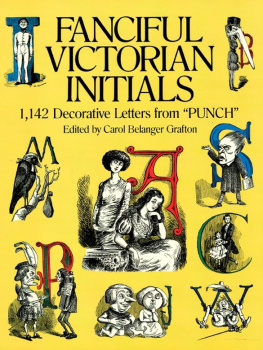
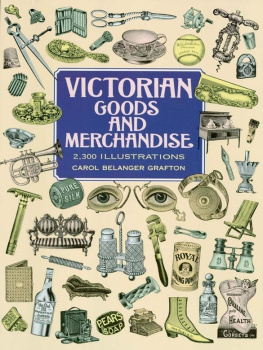



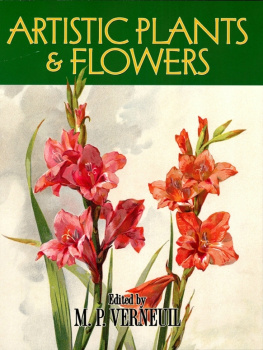
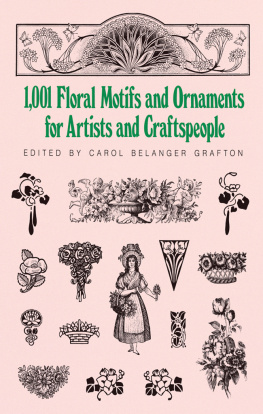

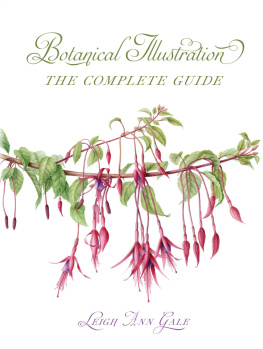

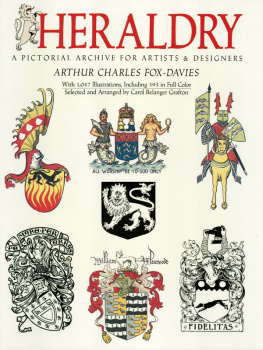
 BOTANICAL ILLUSTRATION THE ESSENTIAL REFERENCE CAROL BELANGER GRAFTON DOVER PUBLICATIONS, INC. MINEOLA, NEW YORK Frontispiece: HENDRICK FROMANTIOU (163394) A Tulip, a Rose and a Passion-Flower in a Glass Vase, 1668
BOTANICAL ILLUSTRATION THE ESSENTIAL REFERENCE CAROL BELANGER GRAFTON DOVER PUBLICATIONS, INC. MINEOLA, NEW YORK Frontispiece: HENDRICK FROMANTIOU (163394) A Tulip, a Rose and a Passion-Flower in a Glass Vase, 1668  Copyright Copyright 2016 by Dover Publications, Inc. All rights reserved. Bibliographical NoteBotanical Illustration: The Essential Reference, first published by Dover Publications, Inc., in 2016, is a new compilation of images reprinted from authoritative sources. For detailed source information see . International Standard Book Number eISBN-13: 978-0-486-81286-1 Manufactured in the United States by RR Donnelley 799859012016 www.doverpublications.com INTRODUCTION The watershed event in the history of botanical illustration, like the history of so many other aspects of Western life and culture, was the invention of printing in the 15th century.
Copyright Copyright 2016 by Dover Publications, Inc. All rights reserved. Bibliographical NoteBotanical Illustration: The Essential Reference, first published by Dover Publications, Inc., in 2016, is a new compilation of images reprinted from authoritative sources. For detailed source information see . International Standard Book Number eISBN-13: 978-0-486-81286-1 Manufactured in the United States by RR Donnelley 799859012016 www.doverpublications.com INTRODUCTION The watershed event in the history of botanical illustration, like the history of so many other aspects of Western life and culture, was the invention of printing in the 15th century.